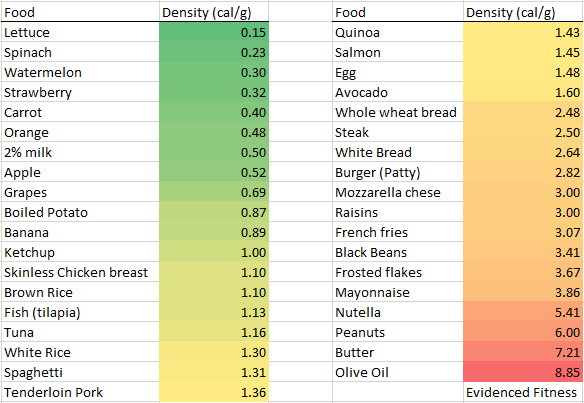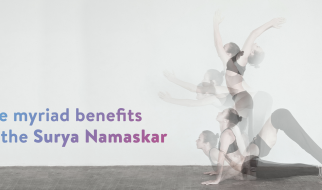Knowing what foods you should consume regardless of your diet will put you at an advantage to achieve your goals. Whether you?re looking to increase muscle mass or lose fat, this calorie density food ranking will help you to make better decisions.
What is caloric density?
Caloric density represents the amount of calories a food contains per gram. There are foods that contain more calories per gram than others. That?s why it?s easier to over-consume calories when you eat certain types of foods. For example, 100 grams of french fries contain almost 10 times more calories than 100 grams of watermelon. This is the ranking of common foods by their caloric density.

What does this mean?
If you are looking to lose weight:
- A food being orange or red does not mean that it should not be consumed. It means that you must take great care of your portions of these foods.
- If you cook with butter, try to use very little or try to avoid it.
- Nut,s like peanuts, come loaded with healthy fats, which makes them a good choice if you consume relatively little since they are very dense.
- Try to prioritize green and yellow foods as you can consume more of these for fewer calories.
- Frying a food increases its caloric density 3.5 times more. One serving of boiled potato contains only 0.87 calories per gram but one serving of french fries contains 3.07 calories per gram.
- Be careful with sugary cereals (Frosted Flakes) as they come full of sugar.
- Dehydrating a fruit is a good way to increase its density by almost 5 times more! Raisins contain 5 times more calories per serving than grapes (and they are the same fruit).
- Eggs have had a bad reputation for the last few years but we can see that they are not a bad option. They also pack a lot of protein per portion.
- Among the common proteins, chicken breast and fish are the best options.
If you are looking to gain mass:
- Adding a tablespoon of olive oil to your meal is an easy way to add more calories and monounsaturated fats.
- Adding a handful of nuts (like peanuts) will help you reach your caloric goal of the day without having to fill you up. In fact, only 30g of peanuts provide 180 calories and 8.5g of protein.
- Dehydrated fruits can be a better way to consume fruits as they contain 5 times more calories per serving.
- Keep in mind that foods with higher density tend to have a lower amount of nutrients (source). This is why you should not avoid eat green and yellow foods.


